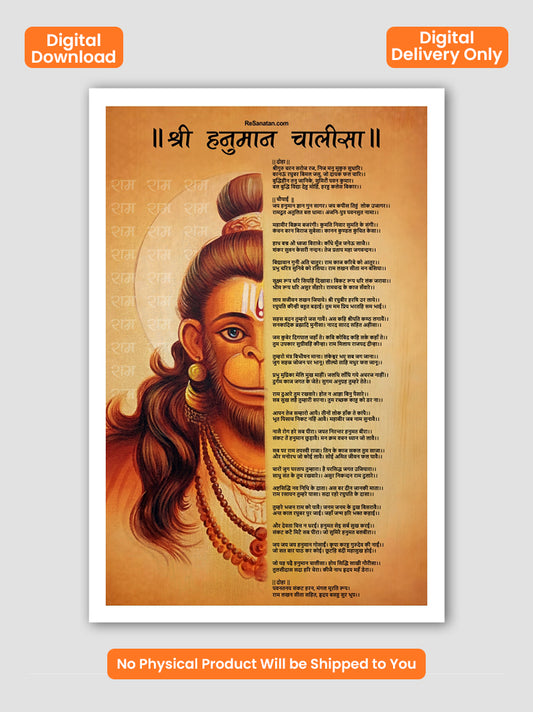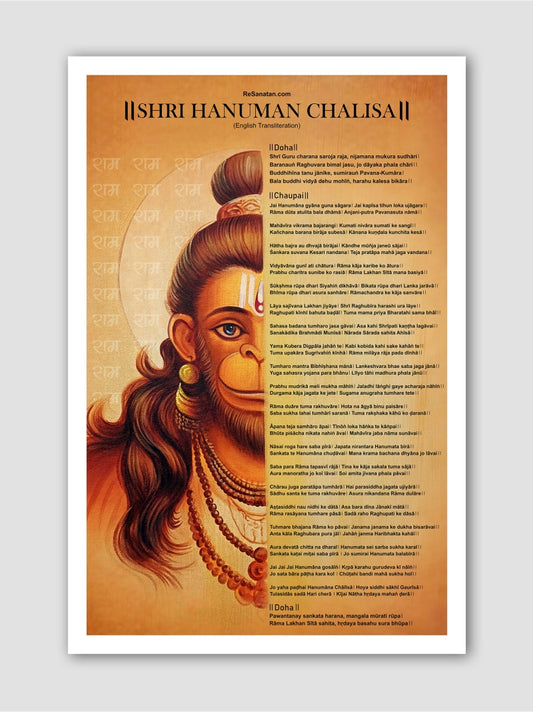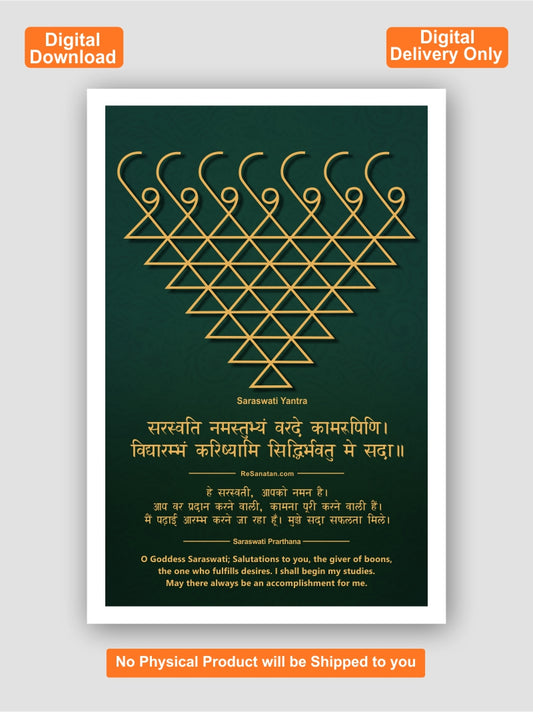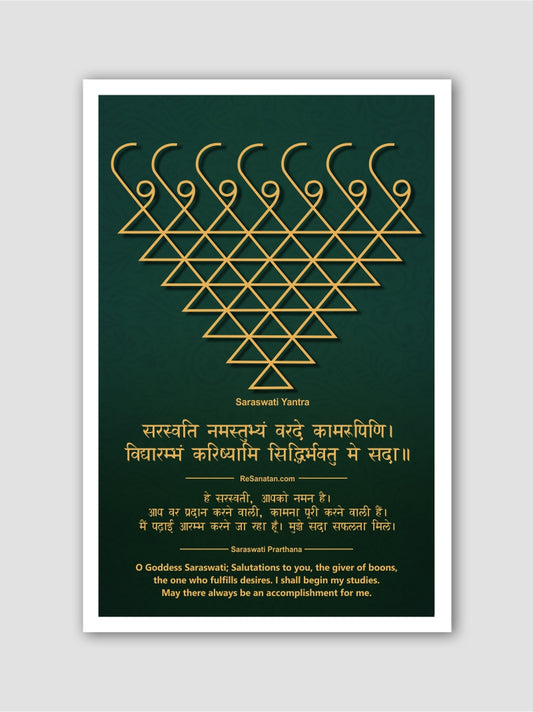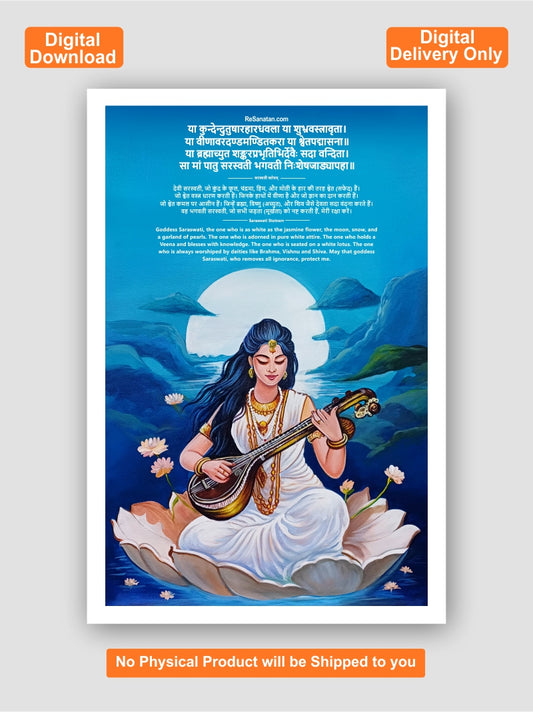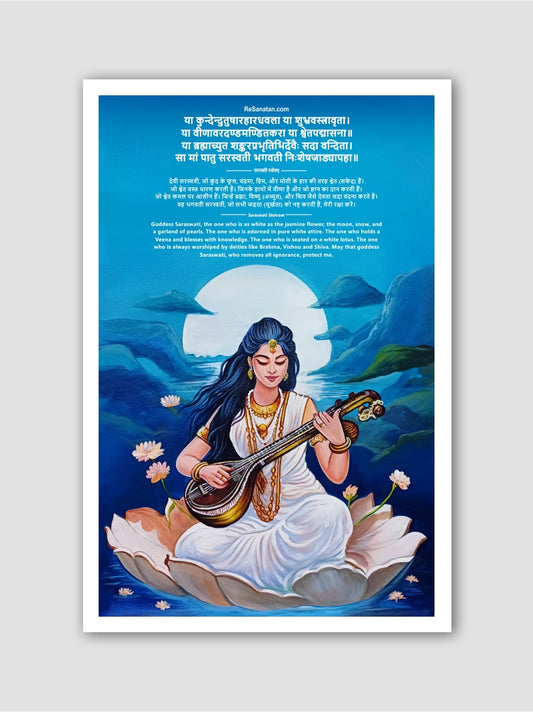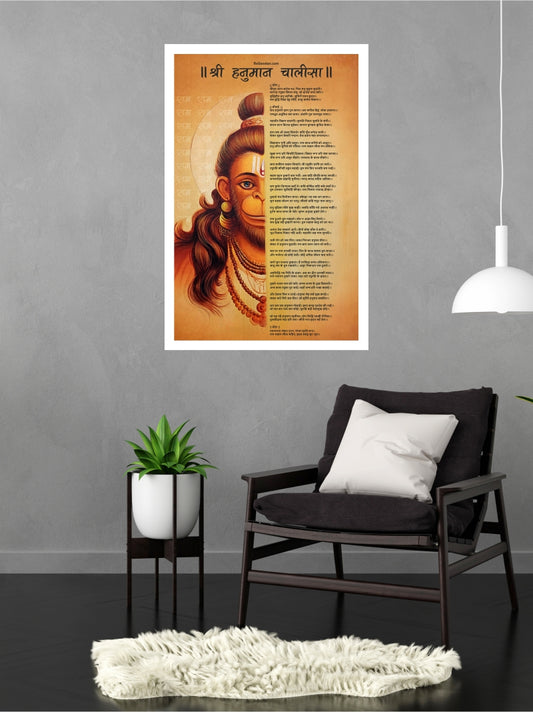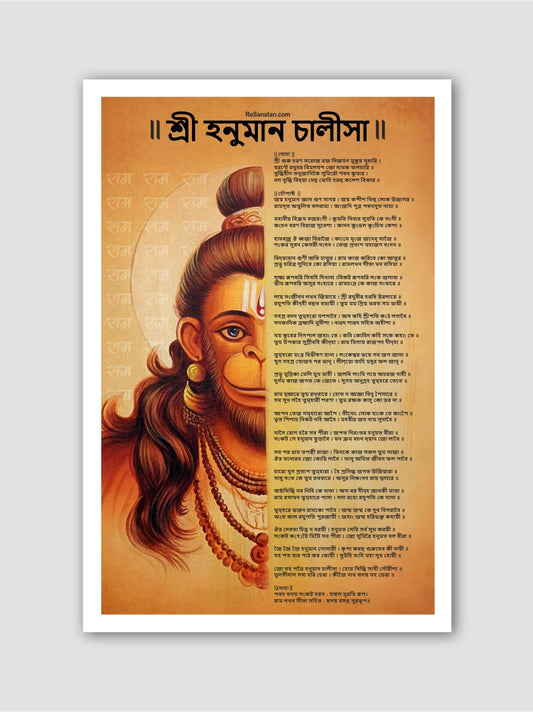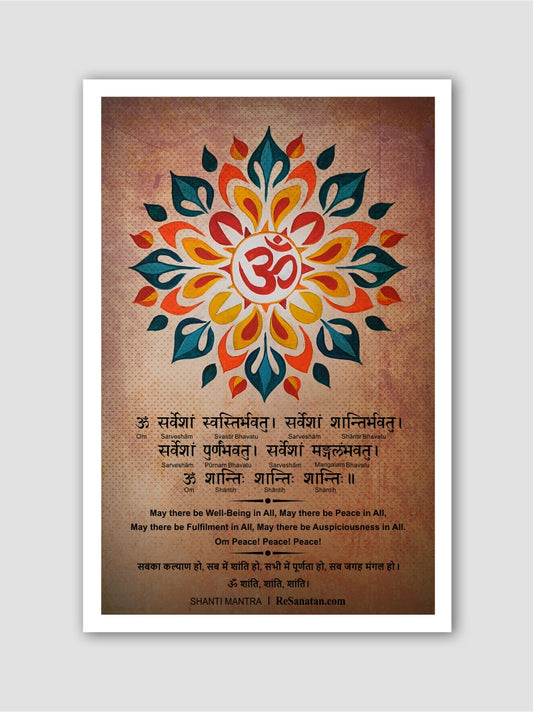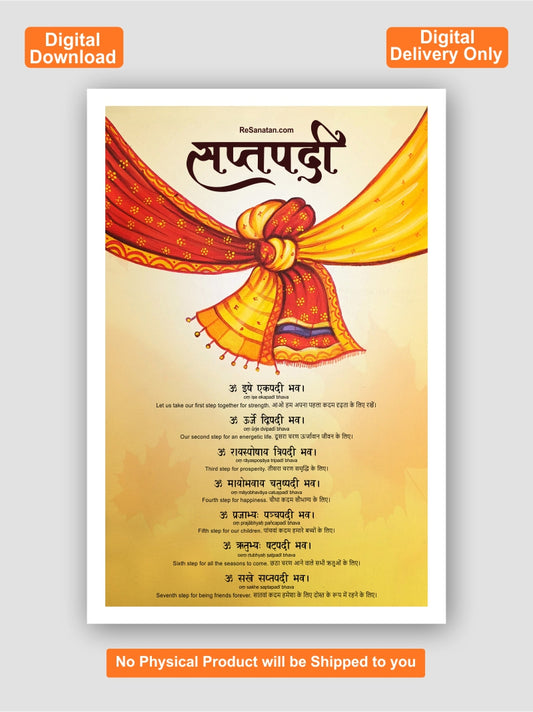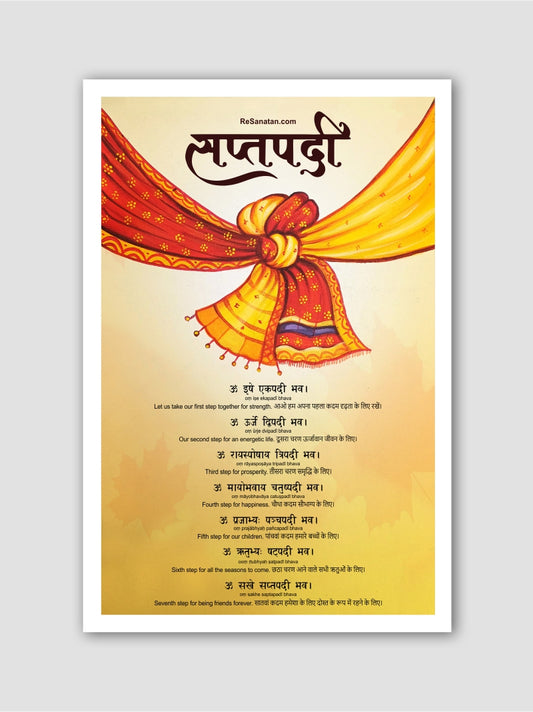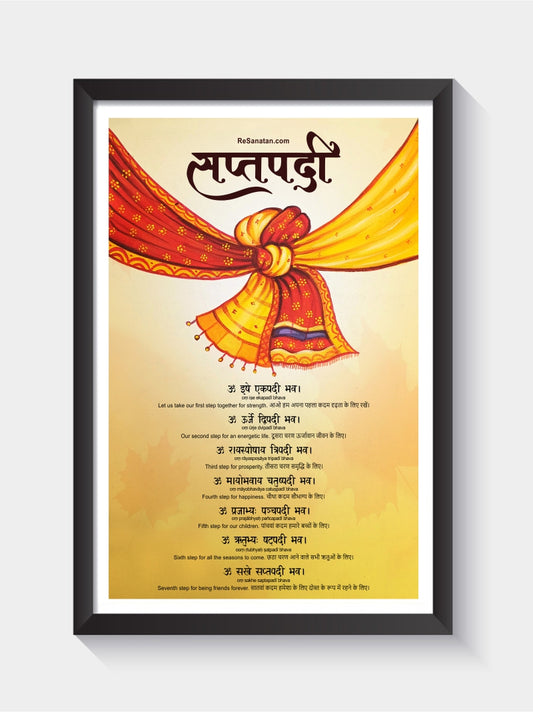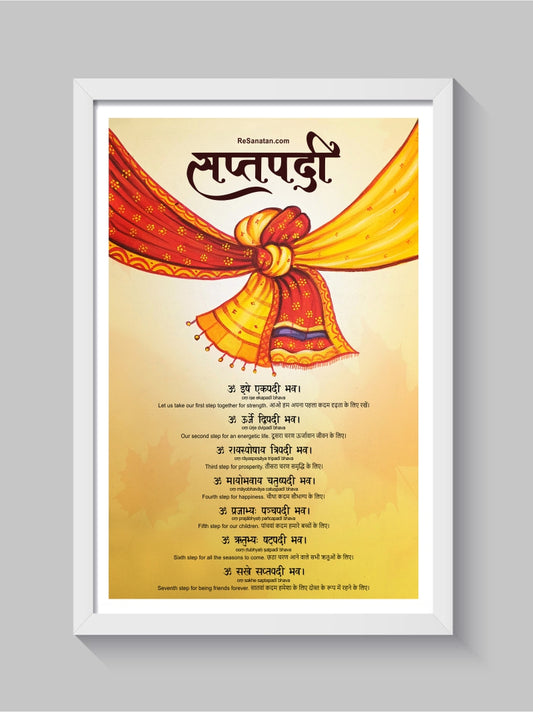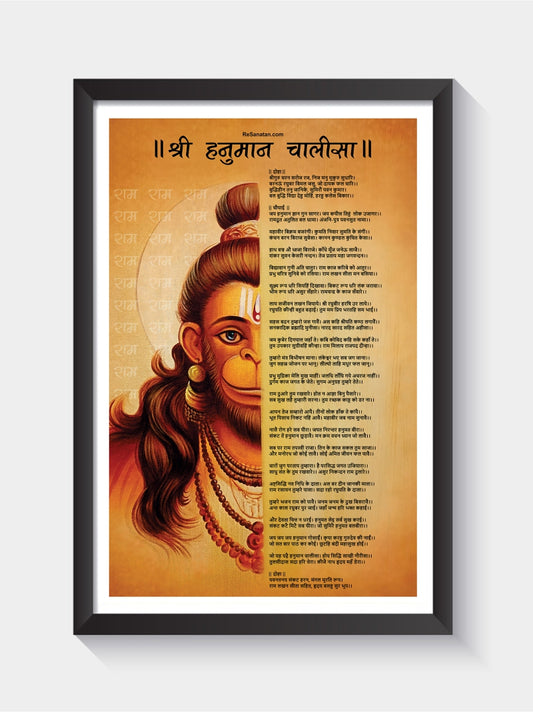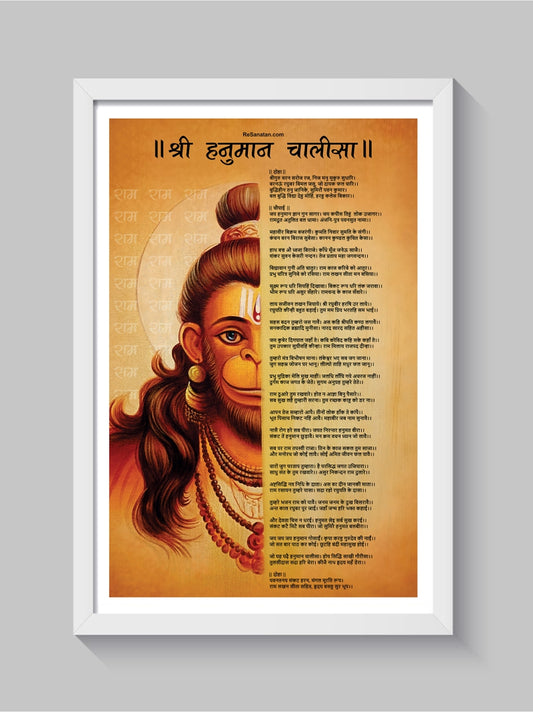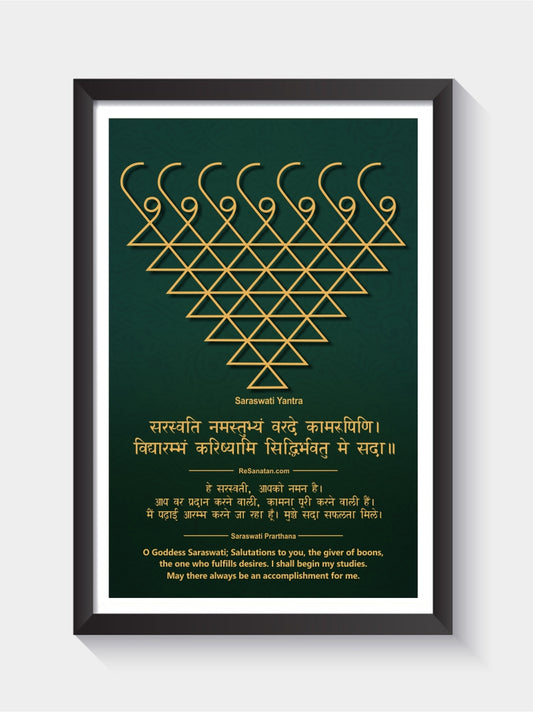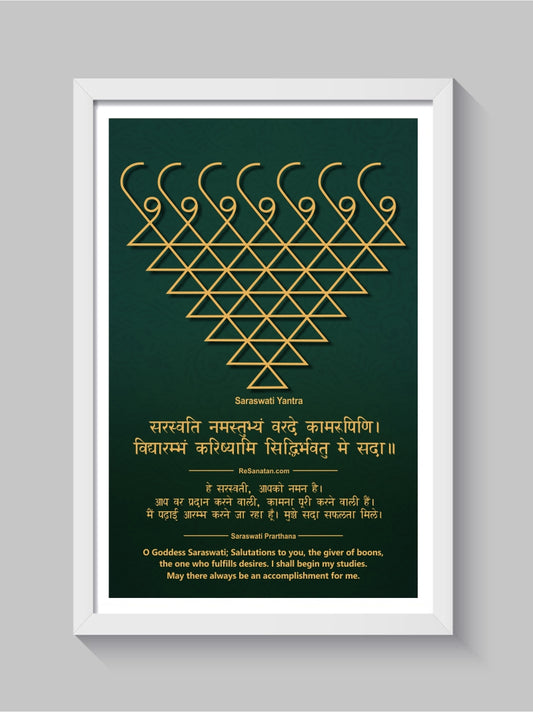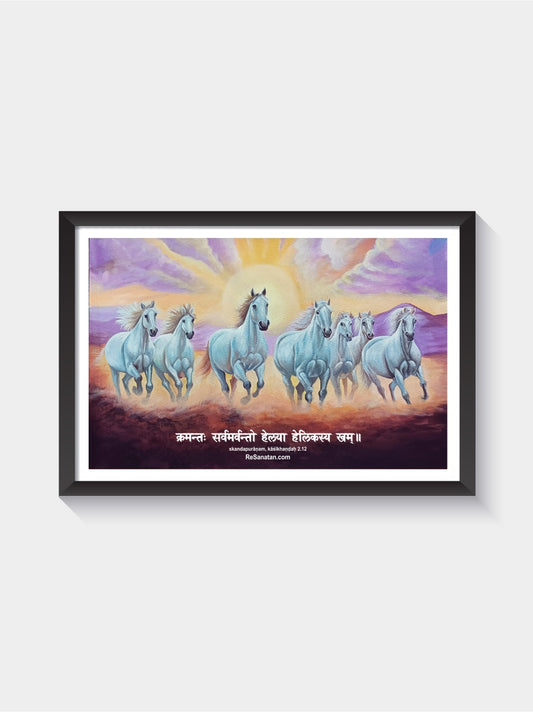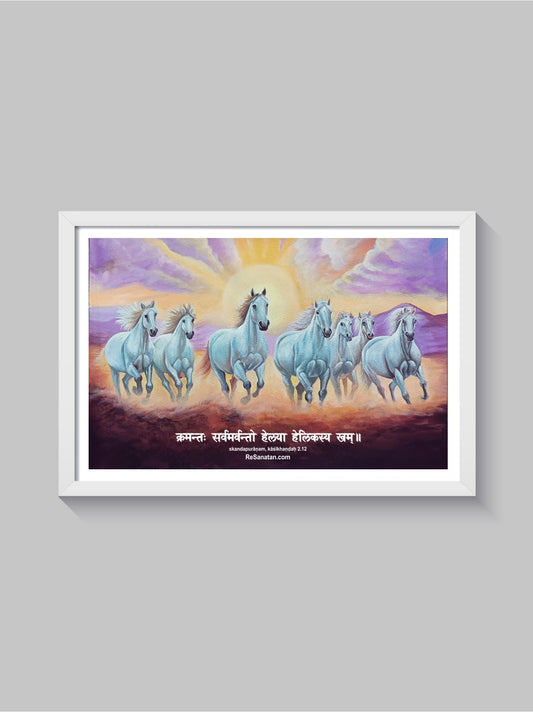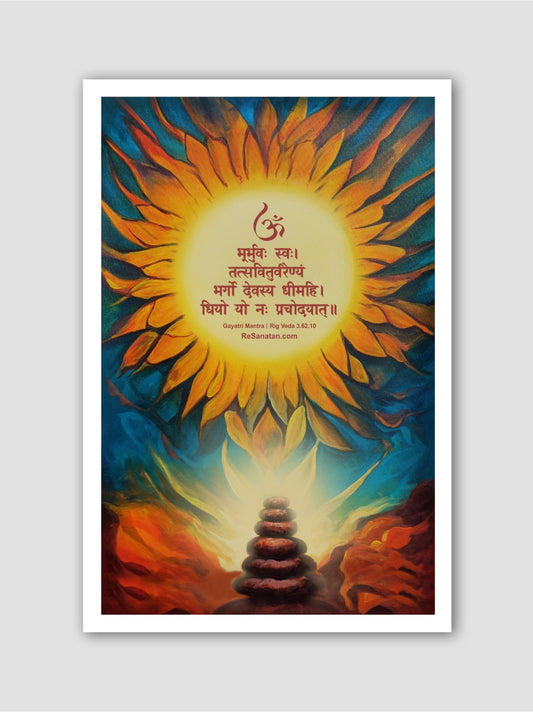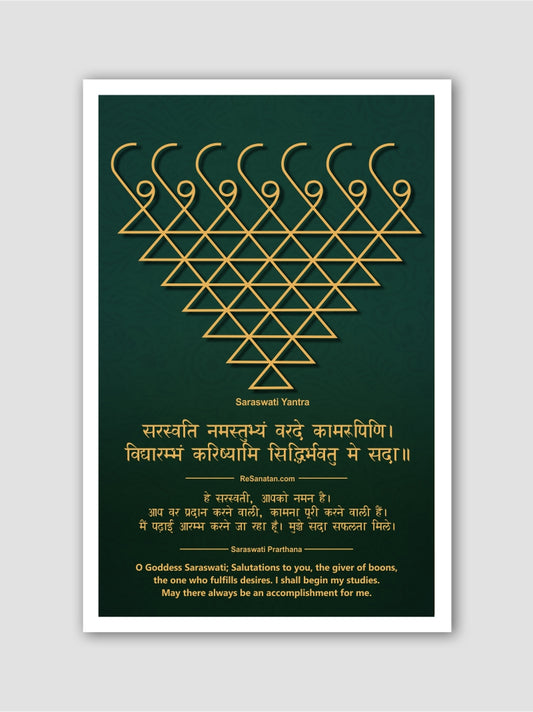Hinduism, one of the oldest religions in the world, is characterized by a rich tapestry of traditions, rituals, and festivals. Hindu holidays, also known as "Vratas" or "Parvas," are an integral part of this cultural heritage, offering a glimpse into the diverse and vibrant practices of Hindu communities. These holidays are celebrated with great enthusiasm and reverence, each with its own unique significance and customs. This article explores some of the most prominent Hindu holidays, highlighting their cultural and spiritual importance.
Makar Sankranti: The Harvest Festival – January
Makar Sankranti, one of the most celebrated Hindu festivals, marks the transition of the Sun into the zodiac sign of Capricorn (Makara). This astronomical event signifies the end of the winter solstice and the beginning of longer days. Makar Sankranti is observed with great enthusiasm across India, with each region having its own unique customs and traditions. This festival, primarily a harvest festival, symbolizes new beginnings, prosperity, and gratitude for the bountiful harvest.
Significance and Mythology
Makar Sankranti holds both astronomical and mythological significance. Astronomically, it marks the Sun's journey northward (Uttarayana), a period considered highly auspicious in Hinduism. According to Hindu mythology, the day is associated with several legends:
Surya and Shani: Makar Sankranti is believed to celebrate the harmonious relationship between Lord Surya (the Sun God) and his son Shani (Saturn). Despite their differences, it is said that Surya visits Shani on this day, symbolizing reconciliation and new beginnings.
Bhishma Pitamah's Demise: In the epic Mahabharata, Bhishma Pitamah, who had the boon of choosing his time of death, waited for the auspicious period of Uttarayana to leave his mortal body. This legend highlights the significance of the Sun's northward journey as a time for attaining moksha (liberation).
Lord Vishnu and the Asuras: Another legend states that on Makar Sankranti, Lord Vishnu ended the terror of the Asuras (demons) by burying their heads under the Mandara Parvat (mountain). This symbolizes the victory of good over evil.
Regional Celebrations
Makar Sankranti is celebrated across India with various names and customs, reflecting the country's rich cultural diversity.
Lohri: In Punjab, Makar Sankranti is preceded by Lohri, a festival celebrated on the eve of Sankranti. People gather around bonfires, sing traditional songs, and dance the Bhangra and Gidda. Lohri signifies the end of winter and the arrival of longer days. It is also a time to celebrate the harvest of sugarcane and other crops.
Pongal: In Tamil Nadu, the festival is known as Pongal, a four-day celebration dedicated to the Sun God. The festival begins with Bhogi, a day for discarding old belongings and celebrating new beginnings. The main day, Thai Pongal, involves boiling rice with milk and jaggery in new pots, allowing it to overflow as a sign of abundance. The third day, Mattu Pongal, is dedicated to honoring cattle, and the final day, Kaanum Pongal, is a time for family reunions and outings.
Uttarayan: In Gujarat, Makar Sankranti is celebrated as Uttarayan, a two-day festival marked by flying kites. The sky is filled with colorful kites, symbolizing the ascent of the Sun into the northern hemisphere. The festival also involves feasting on traditional sweets made from sesame seeds and jaggery, such as tilgul and chikki.
Magh Bihu: In Assam, the festival is known as Magh Bihu or Bhogali Bihu, a harvest festival celebrated with feasting and bonfires. People build temporary huts called "meji" and "bhelaghar" from bamboo, leaves, and thatch, where they gather for community feasts. The huts are burned the next morning, and people indulge in various traditional games and sports.
Khichdi Parv: In Uttar Pradesh and Bihar, Makar Sankranti is known as Khichdi Parv. Devotees take holy dips in the Ganges and other sacred rivers, offer prayers, and prepare khichdi, a dish made of rice and lentils. The festival is marked by charity and giving alms to the poor.
Suggi Habba: In Karnataka, the festival is called Suggi Habba or Makara Sankramana. Farmers celebrate the harvest season by decorating their cattle and preparing special dishes. The exchange of ellu-bella (a mix of sesame seeds, jaggery, coconut, and peanuts) is a unique tradition symbolizing friendship and goodwill.
Common Traditions and Customs
Despite regional variations, several customs and traditions are commonly observed during Makar Sankranti across India:
Kite Flying: Flying kites is a popular activity during Makar Sankranti, symbolizing the Sun's ascent and the spirit of joy and freedom. The sky is filled with vibrant kites, and kite-flying competitions are organized in many places.
Holy Dips: Taking a dip in holy rivers, especially the Ganges, is considered highly auspicious on Makar Sankranti. Devotees believe that bathing in sacred waters purifies the soul and washes away sins.
Special Foods: The festival is marked by the preparation of various traditional foods, particularly sweets made from sesame seeds and jaggery. These ingredients are believed to provide warmth and energy during the winter season. Popular dishes include tilgul (sesame and jaggery sweets), gajak, and chikki.
Bonfires: Lighting bonfires is a common tradition in many regions. It symbolizes the burning away of old, unwanted things and the welcoming of new beginnings. People gather around the bonfire, sing songs, and celebrate with family and friends.
Charity and Giving: Makar Sankranti is a time for charity and giving. People donate food, clothes, and money to the less fortunate, embodying the spirit of generosity and compassion.
Basant Panchami: The Festival of Knowledge and Art – January / February
Basant Panchami, also known as Vasant Panchami, marks the arrival of spring and is celebrated with great fervor across India. This festival, dedicated to Saraswati, the goddess of knowledge, music, and art, typically falls in the month of Magha (January or February) according to the Hindu lunar calendar. Basant Panchami heralds the end of winter and the beginning of a new season filled with growth, learning, and creativity.
Significance and Mythology
Basant Panchami is a festival that intertwines the arrival of spring with the worship of Saraswati. The significance and mythology associated with this day are manifold:
Goddess Saraswati: Saraswati, the goddess of wisdom, learning, music, and arts, is revered during Basant Panchami. It is believed that she was born on this day, making it an auspicious occasion to honor her. Devotees seek her blessings for knowledge, wisdom, and artistic skills.
Season of Spring: The term "Basant" or "Vasant" means spring, and "Panchami" refers to the fifth day. Basant Panchami marks the fifth day of the bright fortnight of the lunar month of Magha, symbolizing the onset of spring. This season is associated with renewal, growth, and new beginnings.
Legend of Kamadeva: Another legend links Basant Panchami to Kamadeva, the Hindu god of love. It is said that Kamadeva, with his consort Rati, is revived on this day, symbolizing the rejuvenation of life and the onset of love and fertility.
Rituals and Customs
Basant Panchami is celebrated with various rituals and customs that highlight the cultural and spiritual essence of the festival:
Saraswati Puja: The primary ritual involves the worship of Goddess Saraswati. Idols and images of Saraswati are adorned with yellow clothes and flowers, and devotees offer prayers, fruits, sweets, and bhog (food offerings). Yellow, representing the vibrancy of life and the bounty of spring, is a significant color in these rituals.
Educational Institutions: Schools, colleges, and other educational institutions organize special Saraswati Puja ceremonies. Students and teachers come together to seek the goddess's blessings for wisdom and academic success. Books, musical instruments, and tools of art are placed before the deity and worshipped.
Vasant Panchami Celebrations: The day is marked by various cultural events, including music, dance, and art competitions. People wear yellow attire, and homes are decorated with yellow flowers. In some regions, kites are flown to celebrate the arrival of spring.
Traditional Foods: Special dishes are prepared for Basant Panchami, often featuring yellow ingredients to symbolize the festival. Traditional foods include sweet rice flavored with saffron, kesar halwa, and other regional delicacies.
Nature Worship: Basant Panchami also involves the worship of nature. Fields and crops are honored, and farmers pray for a good harvest. The blossoming mustard fields, with their bright yellow flowers, are particularly symbolic of the season.
Maha Shivaratri: The Great Night of Shiva – February / March
Maha Shivaratri, meaning "The Great Night of Shiva," is one of the most significant festivals dedicated to Lord Shiva, one of the principal deities of Hinduism. Celebrated annually in the lunar month of Phalguna (February or March), Maha Shivaratri holds immense spiritual importance for millions of devotees across the world. This festival is marked by fasting, night-long vigils, chanting of hymns, and special rituals dedicated to Shiva, symbolizing the overcoming of darkness and ignorance.
Significance and Mythology
Maha Shivaratri is steeped in various myths and legends, each adding to its profound significance:
Divine Marriage: According to one popular legend, Maha Shivaratri commemorates the divine marriage of Lord Shiva and Goddess Parvati. It is believed that on this auspicious night, Shiva and Parvati were united in holy matrimony, symbolizing the harmony of cosmic forces.
Samudra Manthan: Another legend relates to the churning of the ocean (Samudra Manthan). During this cosmic event, a deadly poison (Halahala) emerged from the ocean, threatening to destroy the world. Lord Shiva consumed the poison to save the universe, and his throat turned blue, earning him the name Neelkanth (the blue-throated one). Maha Shivaratri is celebrated to honor Shiva's act of self-sacrifice for the well-being of all creation.
Linga Worship: The origins of worshiping the Shiva Linga on Maha Shivaratri are also traced to a legend. It is said that on this night, Shiva manifested as a huge, infinite pillar of light (linga) to settle a dispute between Brahma and Vishnu about their supremacy. Hence, devotees worship the Shiva Linga, representing the formless and infinite nature of Shiva.
Rituals and Customs
Maha Shivaratri is observed with various rituals and customs, each imbued with deep spiritual meaning:
Fasting: Devotees observe a strict fast on Maha Shivaratri, abstaining from food and sometimes even water. The fast signifies self-discipline, purification, and devotion. Many devotees consume only fruits, milk, and non-grain foods, maintaining a vigil throughout the night.
Night-long Vigil: Staying awake all night is a significant aspect of Maha Shivaratri. Devotees gather in temples or at home to sing hymns, chant mantras like "Om Namah Shivaya," and recite scriptures such as the Shiva Purana and the Tandava Stotra. The night-long vigil symbolizes overcoming ignorance and darkness through the light of knowledge and devotion.
Worship of the Shiva Linga: The primary ritual involves the worship of the Shiva Linga, the symbolic representation of Shiva. Devotees perform Abhishekam (ritual bathing) of the Linga with water, milk, honey, ghee, and other sacred substances. Each offering holds symbolic significance, such as purification, prosperity, and the washing away of sins.
Bilva Leaves: Offering Bilva (Bael) leaves to the Shiva Linga is an integral part of Maha Shivaratri rituals. The trifoliate leaves are considered highly auspicious and are believed to cool the fiery temperament of Shiva. Devotees also offer flowers, fruits, and incense to seek blessings.
Dance and Music: In many places, cultural programs, including dance and music performances dedicated to Lord Shiva, are organized. Devotees perform the Tandava, the cosmic dance of Shiva, which represents the rhythm and cycles of creation and destruction.
Temple Visits: Pilgrimages to Shiva temples are common during Maha Shivaratri. Prominent temples like the Kashi Vishwanath in Varanasi, Kedarnath in the Himalayas, and the Lingaraja Temple in Bhubaneswar attract thousands of devotees who participate in special rituals and prayers.
Holi: The Festival of Colors – March
Holi, the Festival of Colors, is one of the most vibrant and joyous celebrations in Hinduism. Held in March, it marks the arrival of spring and the victory of good over evil. Known for its exuberant festivities, Holi involves throwing colored powders, singing, dancing, and feasting. This festival not only brings people together in a spirit of joy and unity but also serves as a reminder of the triumph of righteousness.
Significance and Mythology
Holi is rooted in various myths and legends that highlight its cultural and spiritual importance:
The Legend of Prahlad and Holika: One of the most famous legends associated with Holi is the story of Prahlad and Holika. Prahlad was a devout follower of Lord Vishnu, much to the displeasure of his father, the demon king Hiranyakashipu. To kill Prahlad, Hiranyakashipu enlisted the help of his sister Holika, who had a boon that made her immune to fire. She sat in a bonfire with Prahlad on her lap, intending to burn him. However, due to his unwavering devotion, Prahlad emerged unscathed while Holika perished. This story symbolizes the victory of devotion and righteousness over evil.
Krishna and Radha: Another popular legend involves Lord Krishna, who, jealous of Radha's fair complexion, playfully applied colors to her face. This act of love and playfulness became a tradition, symbolizing the celebration of love and the playful spirit of Krishna.
Kamadeva: In South India, Holi is also linked to the legend of Kamadeva, the god of love. According to mythology, Kamadeva was incinerated by Lord Shiva's third eye when he tried to disrupt Shiva's meditation. Rati, Kamadeva's wife, performed intense penance, and he was eventually resurrected. Holi is thus also a celebration of love and the rebirth of Kamadeva.
Rituals and Customs
Holi is celebrated with a range of rituals and customs that vary regionally but share a common theme of joy and unity:
Holika Dahan: The night before Holi, bonfires are lit in a ritual known as Holika Dahan. This event symbolizes the burning of evil and the triumph of good, mirroring the story of Prahlad and Holika. People gather around the fire, perform prayers, and offer grains, coconuts, and other items to the flames.
Playing with Colors: On the main day of Holi, known as Dhulandi or Rangwali Holi, people gather in open spaces to throw colored powders (gulal) and spray colored water at each other. This playful exchange of colors symbolizes the breaking down of social barriers and the celebration of unity and equality. The air is filled with laughter, music, and joy as people of all ages participate.
Traditional Foods and Drinks: Holi is also a time for feasting. Special delicacies like gujiya (sweet dumplings filled with khoya and dried fruits), malpua (sweet pancakes), and dahi bhalla (fried lentil balls soaked in yogurt) are prepared and shared. Thandai, a traditional drink made with milk, nuts, and spices, is often consumed, sometimes infused with bhang (cannabis) for an added festive kick.
Music and Dance: Singing and dancing are integral parts of Holi celebrations. People gather to sing traditional Holi songs and perform folk dances. Instruments like dhol and drums add to the festive atmosphere, encouraging spontaneous dancing and merrymaking.
Community Gatherings: Holi fosters a sense of community and togetherness. People visit friends and family, exchange sweets, and extend festive greetings. In many places, large public events and gatherings are organized where everyone can participate in the revelry.
Regional Celebrations
While the essence of Holi remains the same, its celebrations vary across different regions of India, each with its unique traditions:
Lathmar Holi in Barsana and Nandgaon, Uttar Pradesh: In Barsana and Nandgaon, Holi is celebrated with a unique tradition called Lathmar Holi. Women playfully hit men with sticks (lathis), while men defend themselves with shields. This reenactment is rooted in the playful legend of Krishna and Radha.
Holi in Vrindavan and Mathura, Uttar Pradesh: Vrindavan and Mathura, associated with the life of Lord Krishna, are famous for their grand Holi celebrations. The festivities last over a week, including the Phoolon ki Holi, where flowers are showered instead of colors, and the Widow's Holi, where widows, who were traditionally not allowed to participate, celebrate with colors.
Dol Jatra in West Bengal: In West Bengal, Holi is known as Dol Jatra or Dol Purnima. The festival is marked by the procession of idols of Radha and Krishna on decorated palanquins, accompanied by singing and dancing. People apply colors to each other and celebrate with traditional songs and sweets.
Shigmo in Goa: In Goa, Holi is celebrated as Shigmo, a festival that includes street parades with vibrant costumes, folk dances, and music. The celebrations reflect Goa's unique cultural blend of Hindu and Portuguese influences.
Manjal Kuli in Kerala: In Kerala, Holi is celebrated as Manjal Kuli in the Konkani community. The festivities involve applying turmeric paste and other colors to each other, along with singing and dancing.
Yaoshang in Manipur: In Manipur, Holi coincides with the Yaoshang festival. The celebrations last for six days and include traditional dances, sports competitions, and the Thabal Chongba, a traditional Manipuri dance performed in the moonlight.
Rama Navami: The Birth of Lord Rama – March / April
Rama Navami, one of the most auspicious festivals in the Hindu calendar, commemorates the birth of Lord Rama, the seventh avatar of Lord Vishnu. Celebrated on the ninth day (Navami) of the Chaitra month in the Hindu lunar calendar, which typically falls in March or April, this festival holds profound religious and cultural significance. Lord Rama is revered for his embodiment of dharma (righteousness), virtue, and the ideal qualities of a king, son, husband, and father.
Significance and Mythology
Rama Navami marks the birthday of Lord Rama, who was born in Ayodhya to King Dasharatha and Queen Kausalya. The day celebrates the arrival of the divine hero of the epic Ramayana, which narrates Rama's life and his unwavering commitment to dharma. The festival highlights the virtues of honor, courage, loyalty, and devotion, which are exemplified in Rama's life.
Birth of Lord Rama: According to Hindu mythology, King Dasharatha performed the Putrakameshti Yagna (a sacrificial ritual) to beget heirs. As a result, the gods blessed him with four sons: Rama, Bharata, Lakshmana, and Shatrughna. Among them, Rama, born to Queen Kausalya, is the principal figure worshipped on this day.
Ramayana: The epic Ramayana, written by Sage Valmiki, is central to the celebration of Rama Navami. It narrates the life of Rama, his exile, the abduction of his wife Sita by the demon king Ravana, and the subsequent battle to rescue her, showcasing Rama as the epitome of virtue and an ideal ruler.
Rituals and Customs
Rama Navami is observed with various rituals and customs, reflecting deep devotion and reverence for Lord Rama:
Fasting and Prayer: Devotees observe a day-long fast, abstaining from food and sometimes water, to purify their minds and bodies. The fast is often broken after the evening prayers or aarti. Devotees visit temples dedicated to Lord Rama and recite prayers, bhajans (devotional songs), and kirtans (religious hymns).
Reading the Ramayana: Reading or reciting passages from the Ramayana, especially the Ramcharitmanas by Tulsidas, is a significant part of the festivities. Devotees gather in temples or homes to listen to the epic's stories, emphasizing the teachings and values exemplified by Lord Rama.
Rama Katha and Discourses: Religious discourses and recitations of the Rama Katha (stories of Rama) are organized in temples and community centers. These narrations often include dramatizations of significant events from Rama's life, bringing the epic to life and imparting its moral lessons.
Decorations and Processions: Temples and homes are beautifully decorated with flowers, rangoli (colored patterns on the floor), and lights. Many regions organize grand processions, where idols of Rama, Sita, Lakshmana, and Hanuman are placed on elaborately decorated chariots and paraded through the streets. Devotees sing bhajans and chant "Jai Shri Ram" as the procession moves along.
Special Pujas and Aarti: Special pujas (ritual worship) are performed in temples and homes, with offerings of fruits, sweets, and flowers. The aarti (ceremonial waving of lamps) is performed to honor Lord Rama, and devotees seek blessings for peace, prosperity, and protection from evil.
Charity and Community Feasts: Rama Navami is also a time for charity and community service. Devotees distribute food, clothes, and other essentials to the needy. In many places, community feasts (bhandaras) are organized, where free meals are served to all, emphasizing the values of sharing and compassion.
Hanuman Jayanti: The Birth of Lord Hanuman – March / April
Hanuman Jayanti is a significant Hindu festival that commemorates the birth of Lord Hanuman, a devoted follower of Lord Rama and one of the central figures in the epic Ramayana. Celebrated with immense fervor and devotion, Hanuman Jayanti falls on the full moon day (Purnima) of the Hindu lunar month of Chaitra, which typically occurs in March or April. Lord Hanuman is revered for his strength, courage, unwavering devotion, and selfless service, making this festival a celebration of these noble qualities.
Significance and Mythology
Hanuman Jayanti is not just a celebration of the birth of a divine being but also a tribute to the ideals and virtues embodied by Lord Hanuman. Several legends and stories from Hindu mythology highlight the significance of this day:
Birth of Hanuman: According to Hindu mythology, Hanuman was born to Anjana, a female vanara (monkey), and Kesari, a vanara king. It is believed that Lord Shiva incarnated as Hanuman to serve Lord Rama. Anjana performed intense penance to please Shiva, who granted her the boon of a divine son. Hanuman is thus considered an avatar of Shiva and a symbol of strength, devotion, and selfless service.
Hanuman's Role in the Ramayana: Hanuman's unwavering devotion to Lord Rama is a central theme in the Ramayana. His heroic deeds, such as crossing the ocean to find Sita, burning Lanka with his fiery tail, and carrying the Sanjeevani mountain to save Lakshmana, exemplify his loyalty, bravery, and supernatural abilities. Hanuman's role in aiding Rama's quest to rescue Sita and defeat Ravana highlights his significance in Hindu mythology.
Embodiment of Devotion and Strength: Hanuman is often depicted as the epitome of bhakti (devotion) and shakti (strength). His devotion to Rama is seen as the highest form of spiritual surrender, while his physical prowess and courage are admired and worshipped. Hanuman's humility, wisdom, and dedication make him a role model for devotees.
Rituals and Customs
Hanuman Jayanti is observed with various rituals and customs that reflect deep devotion and reverence for Lord Hanuman:
Fasting and Prayer: Devotees observe a day-long fast, abstaining from food and sometimes even water, as a mark of respect and devotion to Hanuman. The fast is often broken after the evening prayers or aarti. Devotees visit Hanuman temples, where special prayers, bhajans (devotional songs), and kirtans (religious hymns) are performed.
Reading the Hanuman Chalisa: Reciting the Hanuman Chalisa, a 40-verse hymn dedicated to Hanuman written by Tulsidas, is a significant part of the festivities. Devotees believe that chanting these verses with devotion can bring them protection, strength, and the blessings of Hanuman.
Abhishekam and Puja: Special rituals, including the Abhishekam (ceremonial bathing) of Hanuman idols, are performed in temples. The idols are bathed with water, milk, honey, and other sacred substances, followed by the application of sindoor (vermilion) and oil. Devotees offer flowers, fruits, sweets, and coconuts to the deity.
Reading the Sundara Kanda: Many devotees read or listen to the Sundara Kanda, the fifth book of the Ramayana, which details Hanuman's adventures and his journey to Lanka. This section is particularly significant because it showcases Hanuman's devotion, bravery, and unwavering faith in Rama.
Hanuman Processions: In some regions, grand processions featuring Hanuman idols are organized. Devotees carry the idols through the streets, accompanied by chanting, singing, and dancing. These processions create a festive atmosphere and allow the community to come together in celebration.
Charity and Community Service: Hanuman Jayanti is also a time for acts of charity and community service. Devotees distribute food, clothes, and other essentials to the needy. Temples and community organizations often organize free meal services (bhandaras) for the public, emphasizing the values of sharing and compassion.
Akshaya Tritiya: The Day of Eternal Prosperity – April / May
Akshaya Tritiya, also known as Akti or Akha Teej, is one of the most auspicious days in the Hindu and Jain calendars. Celebrated in late April or early May, it falls on the third lunar day (Tritiya) of the bright half (Shukla Paksha) of the Hindu month of Vaishakha. The term "Akshaya" means "eternal" or "never diminishing," and this festival is associated with prosperity, new beginnings, and unending good fortune. It is believed that any venture initiated on this day will bring success and growth.
Significance and Mythology
Akshaya Tritiya holds deep cultural and spiritual significance, and several legends underscore its importance:
The Birth of Treta Yuga: According to Hindu mythology, Akshaya Tritiya marks the beginning of Treta Yuga, the second of the four Yugas (ages). Treta Yuga is known for the incarnation of Lord Vishnu in the forms of Lord Rama and Lord Parashurama.
The Descent of the Ganges: One of the most celebrated legends associated with Akshaya Tritiya is the descent of the sacred river Ganges to Earth. It is believed that on this day, King Bhagiratha’s penance was rewarded when the Ganges descended from the heavens to purify the ashes of his ancestors.
Lord Parashurama’s Birth: Akshaya Tritiya is also celebrated as the birthday of Lord Parashurama, the sixth incarnation of Lord Vishnu. He is known for his valor and his role in eradicating evil from the Earth.
Sudama’s Visit to Lord Krishna: Another significant story involves Sudama, a childhood friend of Lord Krishna. On this day, Sudama visited Krishna to seek his help, and despite offering only a humble gift of beaten rice, he was richly rewarded with wealth and prosperity by Krishna.
The Akshaya Patra: The day is also linked to the legendary Akshaya Patra, a magical vessel given to Draupadi by Lord Krishna during the Mahabharata. This vessel provided an endless supply of food, ensuring that the Pandavas never went hungry during their exile.
Rituals and Customs
Akshaya Tritiya is observed with various rituals and customs that emphasize prosperity, charity, and new beginnings:
Puja and Prayers: Devotees perform special pujas at home and in temples. They offer prayers to Lord Vishnu and Goddess Lakshmi, seeking their blessings for prosperity and success. Sacred items such as rice, wheat, flowers, fruits, and sweets are used in the rituals.
Purchasing Gold: One of the most popular customs on Akshaya Tritiya is buying gold and other precious metals. It is believed that purchases made on this day will bring eternal prosperity and good fortune. Jewelry stores witness a significant increase in sales as people invest in gold coins, bars, and ornaments.
Charity and Donations: Acts of charity are highly emphasized on Akshaya Tritiya. Devotees donate food, clothes, and money to the needy, believing that such acts of kindness will yield manifold returns and blessings. Feeding the poor and offering gifts to Brahmins are common practices.
New Ventures and Initiatives: Akshaya Tritiya is considered an ideal day to start new ventures, be it business, construction of a house, or agricultural activities. Many people choose this auspicious day to conduct weddings, as it is believed that marriages solemnized on Akshaya Tritiya will be blessed with eternal happiness.
Holy Dips and Pilgrimages: Taking a holy dip in sacred rivers like the Ganges, Yamuna, or Godavari is believed to purify the soul and bring blessings. Devotees also visit prominent temples and pilgrimage sites to offer their prayers.
Fasting and Food Offerings: Some devotees observe fasts on Akshaya Tritiya, consuming only fruits and milk. Special food offerings are prepared, which are later distributed as prasad to family members and neighbors.
Guru Purnima: Honoring Spiritual Teachers – June / July
Guru Purnima, also known as Vyasa Purnima, is a significant Hindu, Buddhist, and Jain festival dedicated to spiritual and academic teachers, known as "gurus." Celebrated on the full moon day (Purnima) in the Hindu month of Ashadha (June or July), this festival honors the invaluable role of gurus in guiding and shaping individuals' lives through wisdom and knowledge. The day also commemorates the birth of Sage Vyasa, the author of the Mahabharata and the Puranas.
Significance and Mythology
Guru Purnima is steeped in profound spiritual significance and historical legends that highlight its importance:
Sage Vyasa: The festival is also known as Vyasa Purnima to honor Sage Vyasa, who is credited with compiling the Vedas, writing the Mahabharata, and authoring the Puranas. His contributions to Hindu literature and philosophy are unparalleled, and Guru Purnima is dedicated to acknowledging his immense wisdom and teachings.
Lord Shiva as the Adi Guru: According to Hindu tradition, Lord Shiva is considered the Adi Guru (the first guru). It is believed that on this day, Shiva, in his form as Dakshinamurthy, imparted the knowledge of Yoga to the Saptarishis (seven sages), making it a day to honor the lineage of spiritual teachers.
Rituals and Customs
Guru Purnima is observed with various rituals and customs that reflect deep respect and gratitude towards gurus:
Puja and Offerings: Devotees perform special pujas (ritual worship) in honor of their gurus. The puja involves offering flowers, fruits, and sweets to the guru, along with lighting lamps and incense. This ritual is a gesture of respect and gratitude for the guru's guidance.
Paduka Puja: One of the key rituals is the Paduka Puja, where the guru's feet or sandals (padukas) are worshipped. This ritual signifies the disciple's humility and reverence for the spiritual teacher. The padukas are symbolically considered to carry the essence and blessings of the guru.
Recitation of Scriptures: Reading and reciting scriptures, particularly those authored by Sage Vyasa, is an integral part of Guru Purnima celebrations. Devotees engage in the recitation of the Bhagavad Gita, the Mahabharata, and the Puranas to honor Vyasa's contributions to Hindu literature.
Satsang and Discourses: Spiritual gatherings, known as satsangs, are organized where devotees listen to discourses by spiritual leaders and gurus. These gatherings include singing bhajans (devotional songs), chanting mantras, and participating in discussions on spiritual topics.
Guru Dakshina: It is customary for disciples to offer Guru Dakshina (a token of gratitude) to their gurus. This can be in the form of money, gifts, or service. The offering symbolizes the disciple's acknowledgment of the guru's efforts and sacrifices in imparting knowledge.
Meditation and Yoga: Many followers engage in meditation and yoga practices on Guru Purnima. These practices are seen as a way to connect with the teachings of the guru and to cultivate inner peace and spiritual growth.
Charity and Community Service: Acts of charity and community service are encouraged on this day. Devotees distribute food, clothes, and other essentials to the needy. This reflects the teachings of compassion and selflessness often imparted by gurus.
Raksha Bandhan: Celebrating Sibling Bonds – August
Raksha Bandhan, also known as Rakhi, is a beloved Hindu festival that celebrates the cherished bond between brothers and sisters. Observed on the full moon day (Purnima) of the Hindu lunar month of Shravana, which typically falls in August, this festival signifies the deep-rooted affection, duty, and protection that siblings share. Raksha Bandhan is marked by the ritual of sisters tying a sacred thread, or rakhi, around their brothers' wrists, symbolizing love and protection.
Significance and Mythology
Raksha Bandhan's significance is embedded in its name: "Raksha" means protection, and "Bandhan" means bond. The festival underscores the duty of brothers to protect their sisters and the sisters' prayers for their brothers' well-being. Several legends and stories in Hindu mythology highlight the importance of this festival:
Lord Krishna and Draupadi: One of the most popular legends associated with Raksha Bandhan involves Lord Krishna and Draupadi. According to the Mahabharata, when Krishna injured his finger, Draupadi tore a piece of her sari and tied it around his wound to stop the bleeding. Touched by her gesture, Krishna promised to protect her, which he later did during her humiliation in the Kaurava court.
Yamuna and Yama: In another legend, the river goddess Yamuna tied a rakhi to her brother Yama, the god of death. Moved by her affection, Yama granted her immortality and declared that any brother who receives a rakhi from his sister will live long and prosper.
Rituals and Customs
Raksha Bandhan is celebrated with various rituals and customs that reflect the deep bond between siblings:
Tying the Rakhi: The central ritual of Raksha Bandhan involves the sister tying a rakhi around her brother's wrist. This sacred thread symbolizes her love and prayers for his well-being and his commitment to protect her. The brother, in return, gives her gifts and promises to stand by her side through thick and thin.
Prayer and Aarti: Before tying the rakhi, sisters often perform a small prayer or aarti (ceremonial worship) for their brothers. They apply a tilak (a mark) on their brothers' foreheads, offer sweets, and pray for their prosperity and long life.
Exchanging Gifts: After the rakhi is tied, brothers give gifts to their sisters as a token of their love and appreciation. These gifts can range from money and sweets to clothing and jewelry. The exchange of gifts adds to the festive spirit and strengthens the bond between siblings.
Family Gatherings: Raksha Bandhan is a time for family reunions. Extended families come together to celebrate, share meals, and partake in the joyous occasion. Traditional foods and sweets, such as laddoos, barfis, and kheer, are prepared and enjoyed by everyone.
Celebration Beyond Blood Relations: Raksha Bandhan is not limited to biological siblings. It is also common for cousins, close friends, and even neighbors to celebrate the festival, highlighting the broader social and cultural significance of the bond of protection and care.
Regional Variations
While the essence of Raksha Bandhan remains consistent, regional variations in its celebration add to the richness of the festival:
North India: In North India, Raksha Bandhan is celebrated with great enthusiasm. Markets are filled with colorful rakhis and festive sweets. Families come together to perform the rituals, and the day is marked by joyous gatherings and feasts.
Maharashtra: In Maharashtra, Raksha Bandhan coincides with the festival of Narali Purnima, which is significant for the fishing community. Fishermen offer coconuts to the sea and pray for their safety before embarking on their fishing expeditions. Sisters also tie rakhis to their brothers, combining the celebrations.
West Bengal and Odisha: In West Bengal and Odisha, Raksha Bandhan is celebrated as Jhulan Purnima, which involves the worship of Lord Krishna and Radha. Temples and homes are decorated with swings (jhulas), and people participate in devotional songs and dances. Sisters tie rakhis to their brothers, and the day is filled with festivities.
Gujarat: In Gujarat, Raksha Bandhan is celebrated with a unique custom called Pavitropana. Devotees visit Shiva temples and tie sacred threads made of cotton and soaked in panchamrit (a mixture of milk, curd, honey, sugar, and ghee) around the Shiva Linga, seeking blessings for protection and prosperity.
Rajasthan: In Rajasthan, the festival is also known as Lumba Rakhi, where rakhis are tied not only to brothers but also to their sisters-in-law (bhabhis). The Lumba Rakhi is tied around the bangles of the sister-in-law, signifying the inclusion of the entire family in the celebration.
Southern India: In some parts of Southern India, Raksha Bandhan is celebrated as Avani Avittam. This day is significant for the Brahmin community, where men change their sacred threads (janeyu) and perform rituals seeking forgiveness for their past sins. Sisters tie rakhis to their brothers, adding to the spiritual significance of the day.
Krishna Janmashtami: The Birth of Lord Krishna – August / September
Krishna Janmashtami, also known as Gokulashtami or simply Janmashtami, is a major Hindu festival that celebrates the birth of Lord Krishna, one of Hinduism's most beloved deities. Observed on the eighth day (Ashtami) of the dark fortnight in the month of Bhadrapada (August or September), this festival is celebrated with immense devotion and joy across India and by Hindu communities worldwide. Lord Krishna, the eighth incarnation of Lord Vishnu, is worshipped for his divine playfulness, wisdom, and role in the epic Mahabharata.
Significance and Mythology
Krishna Janmashtami commemorates the divine birth of Lord Krishna in the city of Mathura, under dramatic circumstances, to rid the world of evil and establish dharma (righteousness):
Birth of Krishna: According to Hindu mythology, Lord Krishna was born at midnight on the eighth day of the dark fortnight of Bhadrapada in a prison cell in Mathura. His parents, Devaki and Vasudeva, were imprisoned by Devaki’s brother, King Kamsa, who feared a prophecy that Devaki’s eighth child would be his destroyer. Miraculously, on the night of Krishna’s birth, the prison guards fell asleep, and Vasudeva carried the newborn Krishna across the Yamuna River to the safety of Gokul, where he was raised by his foster parents, Nanda and Yashoda.
Krishna's Role in the Mahabharata: Lord Krishna played a pivotal role in the Mahabharata, serving as a friend, philosopher, and guide to the Pandavas, especially to Arjuna. His teachings to Arjuna on the battlefield of Kurukshetra are immortalized in the Bhagavad Gita, one of the most revered texts in Hindu philosophy.
Leelas of Krishna: Krishna is celebrated for his numerous divine play (leelas) during his childhood and youth. Stories of his mischievous acts, such as stealing butter, playing with the gopis (milkmaids), and lifting the Govardhan Hill, are cherished by devotees and are a central part of Janmashtami celebrations.
Rituals and Customs
Krishna Janmashtami is observed with a variety of rituals and customs, reflecting deep devotion and joy:
Fasting: Many devotees observe a day-long fast (upavasa) which is broken only at midnight, the time of Krishna’s birth. The fast is a form of penance and devotion, believed to purify the mind and body.
Jhulan Seva: Temples and homes set up cradles (jhulas) decorated with flowers and lights. An idol of baby Krishna (Laddu Gopal) is placed in the cradle, and devotees gently swing it while singing devotional songs.
Midnight Celebrations: The highlight of Janmashtami is the midnight celebration of Krishna’s birth. Devotees gather in temples to chant prayers, sing bhajans, and perform aarti (ceremonial worship). The idol of baby Krishna is bathed with milk, curd, honey, ghee, and water in a ceremonial bathing ritual called abhishekam.
Reenactments and Plays: Many communities organize dramatic reenactments of Krishna’s childhood stories, known as Rasa Lila or Krishna Lila. These plays depict episodes from Krishna’s life, including his mischievous deeds, his dance with the gopis, and his miraculous feats.
Dahi Handi: In Maharashtra and parts of North India, the festival includes the Dahi Handi ceremony, which mimics Krishna’s childhood act of stealing butter. A clay pot filled with curd, butter, and money is hung high above the ground, and teams of young men form human pyramids to reach and break the pot. This event is accompanied by much cheer and festive spirit.
Decorations and Feasting: Homes and temples are adorned with flowers, lights, and rangoli (decorative designs made on the floor). Special dishes, particularly those made with milk and butter, are prepared and offered to Krishna. Popular offerings include makhan (butter), kheer (rice pudding), and panjiri (a sweet mixture made of dry fruits and nuts).
Ganesh Chaturthi: The Birth of Lord Ganesha – August / September
Ganesh Chaturthi, also known as Vinayaka Chaturthi, is one of the most popular and widely celebrated Hindu festivals. This festival marks the birth of Lord Ganesha, the elephant-headed deity who is revered as the remover of obstacles, the god of wisdom, and the patron of arts and sciences. Ganesh Chaturthi falls in the month of Bhadrapada (August or September) and lasts for ten days, culminating in Anant Chaturdashi. The festival is celebrated with immense devotion and grandeur, especially in Maharashtra, Karnataka, Gujarat, and Andhra Pradesh.
Significance and Mythology
Ganesh Chaturthi is deeply rooted in Hindu mythology and carries significant cultural and spiritual meaning:
Birth of Lord Ganesha: According to Hindu mythology, Ganesha was created by Goddess Parvati out of turmeric paste, which she used to clean herself. She fashioned a boy from the paste and breathed life into him. She then set him to guard her while she bathed. When Lord Shiva, Parvati's husband, returned and found Ganesha preventing him from entering, a battle ensued. In his anger, Shiva beheaded Ganesha. When Parvati discovered this, she was devastated. To console her, Shiva promised to bring Ganesha back to life. He instructed his followers to find the head of the first creature they encountered, which happened to be an elephant. Thus, Ganesha was resurrected with an elephant's head.
Symbolism: Lord Ganesha symbolizes wisdom, prosperity, and good fortune. His elephant head represents wisdom and understanding, his large ears signify the importance of listening, and his large belly represents the ability to digest all experiences, both good and bad. The mouse, his vehicle, symbolizes humility and the ability to overcome desires.
Rituals and Customs
Ganesh Chaturthi is celebrated with various rituals and customs, each imbued with deep devotion and joy:
Ganesh Idol Installation (Pranapratishtha): The festival begins with the installation of clay idols of Lord Ganesha in homes and public pandals (temporary structures). The idols are often beautifully decorated and can range in size from a few inches to several feet. The installation ceremony, called Pranapratishtha, involves chanting of mantras and hymns to invoke the divine presence of Ganesha into the idol.
Daily Pujas and Offerings: For the next ten days, devotees perform daily pujas (ritual worship) and aartis (ceremonial worship with lamps) to honor Ganesha. Offerings of modaks (sweet dumplings believed to be Ganesha's favorite), fruits, flowers, and sweets are made. Devotees also recite the Ganesh Atharvashirsha, a Vedic hymn dedicated to Ganesha.
Cultural Events and Community Activities: Ganesh Chaturthi is a time for community gathering and celebration. Public pandals organize various cultural programs, including music, dance, drama, and devotional singing. These events not only celebrate the festival but also foster a sense of community and togetherness.
Environmental Awareness: In recent years, there has been a growing emphasis on celebrating Ganesh Chaturthi in an environmentally friendly manner. Many devotees now opt for eco-friendly clay idols and natural colors to minimize the environmental impact of the festival. Various campaigns promote the use of sustainable materials and the importance of protecting water bodies during idol immersion.
Visarjan (Immersion): The festival concludes with the visarjan, the ceremonial immersion of the Ganesha idols in water bodies such as rivers, lakes, or the sea. This ritual symbolizes the cycle of creation and dissolution in nature. Devotees carry the idols in grand processions, accompanied by singing, dancing, and chanting of "Ganpati Bappa Morya, Pudhchya Varshi Lavkar Ya" (Hail Lord Ganesha, come again next year).
Navaratri: The Nine Nights of the Goddess – September / October
Navaratri, meaning "nine nights," is a major Hindu festival dedicated to the worship of the goddess Durga and her nine manifestations. Celebrated in the lunar month of Ashwin (September or October), Navaratri is observed with great devotion and fervor across India. This festival symbolizes the triumph of good over evil and is a time for spiritual reflection, worship, and celebration. The festival culminates on the tenth day, known as Vijayadashami or Dussehra.
Significance and Mythology
Navaratri holds deep spiritual significance and is steeped in various legends and myths:
The Battle of Durga and Mahishasura: The most prominent legend associated with Navaratri is the battle between the goddess Durga and the buffalo demon Mahishasura. According to Hindu mythology, Mahishasura was granted a boon that he could not be defeated by any man or god. Empowered by this boon, he wreaked havoc in the heavens and on Earth. The gods, unable to defeat him, created Durga, a powerful goddess embodying their collective energy. Durga fought Mahishasura for nine days and nights and finally defeated him on the tenth day, symbolizing the victory of good over evil.
The Ramayana Connection: In some regions, Navaratri is linked to the epic Ramayana. It is believed that Lord Rama worshipped the goddess Durga for nine nights to gain her blessings before his battle with the demon king Ravana. On the tenth day, Rama emerged victorious, symbolizing the triumph of dharma (righteousness) over adharma (evil). This day is celebrated as Vijayadashami or Dussehra.
The Nine Forms of Durga: Each day of Navaratri is dedicated to one of the nine forms of Durga, collectively known as Navadurga. These forms are Shailaputri, Brahmacharini, Chandraghanta, Kushmanda, Skandamata, Katyayani, Kalaratri, Mahagauri, and Siddhidatri. Each form represents a different aspect of the goddess and is worshipped with specific rituals and prayers.
Rituals and Customs
Navaratri is celebrated with various rituals and customs that reflect devotion and reverence for the goddess:
Kalash Sthapana (Ghatasthapana): The festival begins with Kalash Sthapana, the installation of a sacred pot (kalash) filled with water, rice, and a coin. The pot is placed on a bed of soil in which barley seeds are sown. The pot is adorned with mango leaves and a coconut and is kept in a sanctified place. This ritual symbolizes the invocation of the goddess into the household.
Fasting and Prayer: Devotees observe fasts during Navaratri, abstaining from grains, meat, and alcohol. Some people observe a complete fast, consuming only fruits and milk, while others follow a restricted diet. Fasting is accompanied by daily prayers and recitation of scriptures such as the Durga Saptashati, a text describing the goddess's victories over demons.
Durga Puja: Each day of Navaratri, special pujas (ritual worship) are performed in honor of the goddess. Devotees offer flowers, fruits, sweets, and lamps to the deity. Temples and homes are decorated with lights and rangoli (colored patterns on the floor), and the atmosphere is filled with the sounds of devotional songs and mantras.
Garba and Dandiya Raas: In Gujarat and parts of Maharashtra, Navaratri is synonymous with Garba and Dandiya Raas, traditional folk dances performed in honor of the goddess. Garba involves rhythmic clapping and circular movements, while Dandiya Raas is performed with sticks (dandiyas). These dances are performed in colorful costumes, accompanied by live music and singing, creating a festive atmosphere.
Kanya Puja: On the eighth or ninth day of Navaratri, known as Ashtami or Navami, Kanya Puja is performed. In this ritual, nine young girls, representing the nine forms of Durga, are worshipped. Their feet are washed, and they are offered food, sweets, and new clothes. This ritual emphasizes the divine feminine and the importance of girl children in society.
Vijayadashami (Dussehra): The tenth day, Vijayadashami or Dussehra, marks the culmination of Navaratri. It celebrates the victory of Durga over Mahishasura and Rama over Ravana. Effigies of Ravana, his brother Kumbhakarna, and son Meghnath are burned in public gatherings, symbolizing the destruction of evil. Processions, fairs, and cultural programs are organized, and devotees immerse the idols of Durga in rivers or other water bodies, signifying her return to her celestial abode.
Karva Chauth: A Fast for Marital Bliss – October / November
Karva Chauth is a traditional Hindu festival celebrated primarily by married women in North India. This festival, observed in the month of Kartik (October or November), involves a day-long fast undertaken by wives for the well-being, prosperity, and longevity of their husbands. It is a deeply ingrained cultural practice that reflects the love and dedication of married women towards their spouses. The fast is broken only after sighting the moon and performing specific rituals.
Significance and Mythology
Karva Chauth holds immense cultural and emotional significance, and several legends and myths are associated with the festival:
Savitri and Satyavan: One of the popular legends associated with Karva Chauth is the story of Savitri and Satyavan. According to the legend, Savitri was a devoted wife who fought against the god of death, Yama, to bring her husband Satyavan back to life. Her unwavering devotion and determination impressed Yama, who granted Satyavan a new lease of life. This story underscores the power of a wife's devotion and the sanctity of marriage.
Veervati's Tale: Another well-known legend is that of Queen Veervati, who was the only sister among seven brothers. She observed her first Karva Chauth after marriage but fainted due to hunger and thirst. Her brothers, unable to see her suffering, tricked her into breaking her fast by creating a mirror reflection of the moon. Soon after, she received the news of her husband's death. Distraught, Veervati prayed fervently, and her devotion moved the gods to restore her husband's life. This tale highlights the themes of loyalty and the powerful impact of a wife's prayers.
Karva's Story: The festival is also linked to the story of a woman named Karva, who saved her husband from being swallowed by a crocodile through her intense devotion and prayers. Yama, the god of death, was compelled to spare her husband's life and grant her wish. This story emphasizes the strength of a devoted wife's love and the protective power of her prayers.
Rituals and Customs
Karva Chauth is marked by various rituals and customs, each symbolizing the devotion and dedication of married women:
Pre-Dawn Meal (Sargi): The day begins with a pre-dawn meal known as Sargi, which is prepared by the mother-in-law and includes fruits, sweets, and other nourishing items. Women wake up early to consume this meal before sunrise, as it provides them the necessary energy to sustain the fast throughout the day.
Fasting and Prayer: After Sargi, women observe a strict fast, abstaining from food and water until moonrise. They spend the day in prayer, seeking blessings for their husbands' long life and well-being. The fasting period is a time for spiritual reflection and devotion.
Karva and Puja: The term "Karva" refers to an earthen pot with a spout, which is an integral part of the rituals. The pot is filled with water and adorned with a sacred thread. Women gather in groups to perform the Karva Chauth puja, during which they narrate the legend of Karva Chauth and offer prayers. They rotate the Karva among themselves, signifying unity and mutual support.
Mehendi and Adornments: Applying mehendi (henna) on hands and feet is an important custom. Mehendi is considered auspicious and symbolizes beauty and prosperity. Women also dress in their finest clothes, often wearing red or brightly colored saris or suits, and adorn themselves with jewelry, bangles, and bindi.
Evening Rituals and Moonrise: As evening approaches, women prepare for the final rituals. They gather in a designated area, often with other fasting women, and wait for the moon to rise. Once the moon is visible, they view its reflection in a vessel filled with water or through a sieve. They offer water to the moon, pray for their husbands' well-being, and seek the moon's blessings. The husband then helps his wife break the fast by offering her the first sip of water and a piece of sweet, symbolizing the end of the fast.
Gifts and Blessings: It is customary for husbands to give their wives gifts as a token of appreciation and love. These gifts can include jewelry, clothes, or other meaningful items. The exchange of gifts strengthens the bond between the couple and adds to the festive spirit.
Diwali: The Festival of Lights – October / November
Diwali, also known as Deepavali, is one of the most important and widely celebrated Hindu festivals. It symbolizes the victory of light over darkness, knowledge over ignorance, and good over evil. Celebrated over five days, Diwali falls in the Hindu month of Kartika, which typically occurs in October or November. The festival is marked by lighting oil lamps, bursting fireworks, performing rituals, and sharing sweets. Diwali is not only a religious festival but also a cultural celebration that brings together families and communities.
Significance and Mythology
Diwali is steeped in various myths and legends, each adding to its profound cultural and spiritual significance:
Return of Lord Rama: The most popular legend associated with Diwali is the return of Lord Rama to Ayodhya after a 14-year exile. According to the epic Ramayana, Rama, his wife Sita, and his brother Lakshmana returned to Ayodhya after defeating the demon king Ravana. The people of Ayodhya lit oil lamps to welcome them, symbolizing the triumph of good over evil.
Goddess Lakshmi: Diwali is also associated with the worship of Goddess Lakshmi, the goddess of wealth and prosperity. It is believed that on this day, Lakshmi emerged from the ocean of milk during the churning of the sea (Samudra Manthan). Hence, Lakshmi Puja, dedicated to the goddess, is performed to seek her blessings for prosperity and well-being.
Lord Krishna: In some regions, Diwali celebrates the victory of Lord Krishna over the demon Narakasura. According to the legend, Narakasura had imprisoned 16,000 princesses, and Krishna defeated him and freed them. This event is celebrated as Naraka Chaturdashi, a day before the main Diwali festival.
Pandavas' Return: Another legend links Diwali to the return of the Pandavas to Hastinapur after their 13-year exile, as described in the epic Mahabharata. Their return was celebrated with joy and lighting of lamps, symbolizing the victory of light over darkness.
The Five Days of Diwali
Diwali is celebrated over five days, each with its own significance and rituals:
Dhanteras (Day 1): Dhanteras marks the beginning of Diwali and is dedicated to the worship of Lord Dhanvantari, the god of health and Ayurveda. People clean their homes and buy new items, particularly gold, silver, and utensils, as it is considered auspicious. In the evening, small oil lamps are lit to drive away evil spirits and welcome prosperity.
Naraka Chaturdashi (Day 2): Also known as Choti Diwali, this day commemorates the victory of Lord Krishna over Narakasura. It is a day for cleansing and purification, symbolizing the removal of evil and negativity. People wake up early, apply aromatic oils, and take ritual baths. The evening is marked by lighting lamps and bursting a few firecrackers.
Lakshmi Puja (Day 3): The third day is the main Diwali festival, dedicated to the worship of Goddess Lakshmi. Homes are decorated with rangoli (colored patterns), and the entrances are adorned with marigold flowers and mango leaves. In the evening, Lakshmi Puja is performed with great devotion, seeking the goddess's blessings for wealth and prosperity. Oil lamps are placed in and around homes, and fireworks light up the sky.
Govardhan Puja (Day 4): Also known as Annakut, this day celebrates Lord Krishna lifting the Govardhan Hill to protect the villagers from the wrath of Indra, the rain god. Devotees prepare a large variety of vegetarian food and offer it to Krishna as a mark of gratitude. In some regions, this day is also celebrated as Vishwakarma Puja, dedicated to the divine architect.
Bhai Dooj (Day 5): The fifth and final day of Diwali is Bhai Dooj, a day dedicated to the bond between brothers and sisters. Sisters pray for their brothers' long life and prosperity, applying a ceremonial tilak on their foreheads. Brothers, in return, give gifts to their sisters and vow to protect them.
Rituals and Customs
Diwali is celebrated with various rituals and customs that reflect the cultural richness and spiritual depth of the festival:
Cleaning and Decorating Homes: In preparation for Diwali, homes are thoroughly cleaned, renovated, and decorated. This symbolizes the removal of past evils and making space for positivity. Colorful rangoli designs are made at the entrance, and homes are adorned with flowers and lights.
Lighting Lamps and Fireworks: Lighting oil lamps (diyas) and candles is a central part of Diwali celebrations. These lamps are placed in rows around homes, temples, and streets, symbolizing the victory of light over darkness. Fireworks are also a significant part of the festivities, adding to the joyous atmosphere.
Lakshmi Puja: On the main day of Diwali, families gather to perform Lakshmi Puja. The puja includes the worship of Goddess Lakshmi, Lord Ganesha (the remover of obstacles), and other deities. Offerings of sweets, fruits, flowers, and coins are made, and prayers are chanted to seek blessings for health, wealth, and prosperity.
Exchanging Gifts and Sweets: Diwali is a time for sharing joy and goodwill. People exchange gifts and sweets with family, friends, and neighbors. Traditional sweets such as laddoos, barfis, and pedas are prepared and distributed, symbolizing the sweetness of the occasion.
Feasting: Festive meals are an integral part of Diwali. Families prepare a variety of traditional dishes and sweets, enjoying sumptuous feasts together. Special delicacies vary by region but often include a mix of savory and sweet items.
Conclusion
Hindu holidays are a profound reflection of the religion's cultural richness and spiritual depth. Each festival carries a unique significance, steeped in mythology and tradition, bringing communities together in celebration and reverence. These holidays not only foster a sense of unity and continuity among Hindus but also offer an opportunity for people of other faiths to appreciate and partake in the diverse cultural heritage of Hinduism. Through these vibrant and meaningful celebrations, the timeless values of love, devotion, and righteousness are passed down through generations, ensuring the perpetuation of a rich and ancient tradition.

